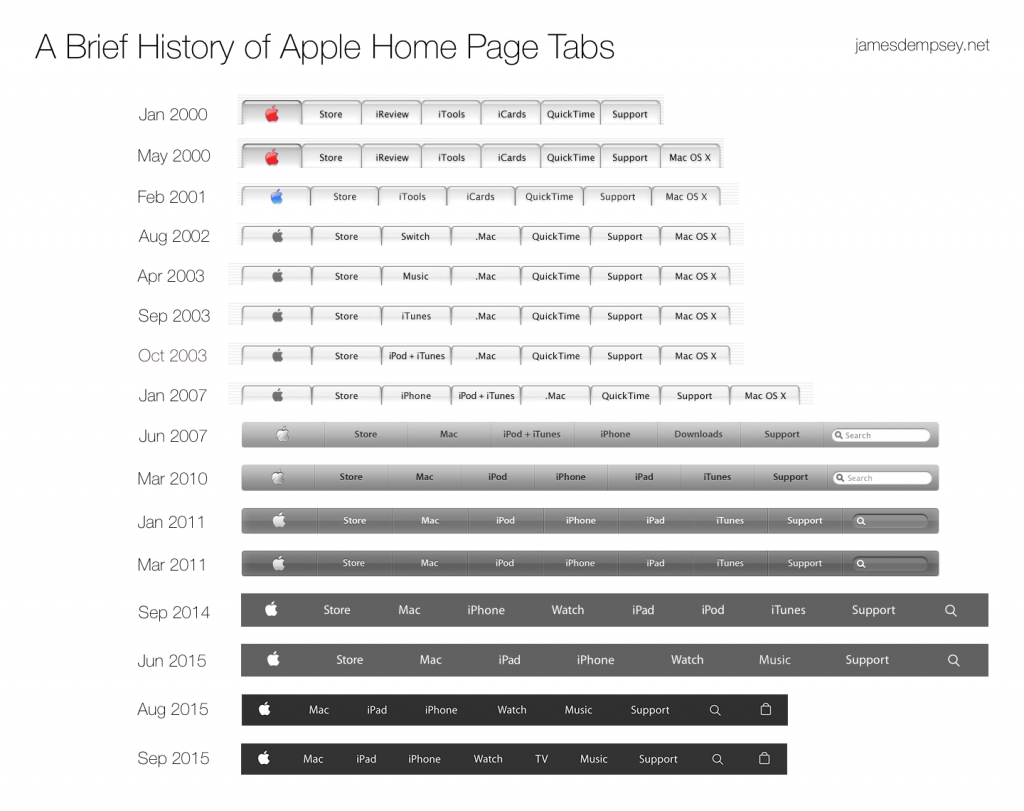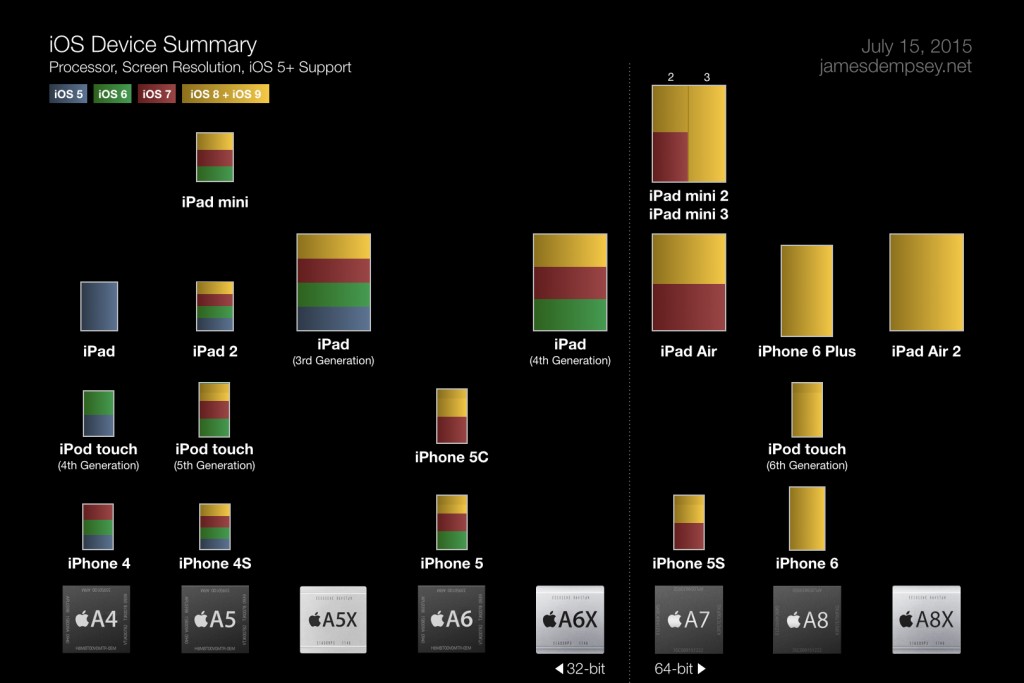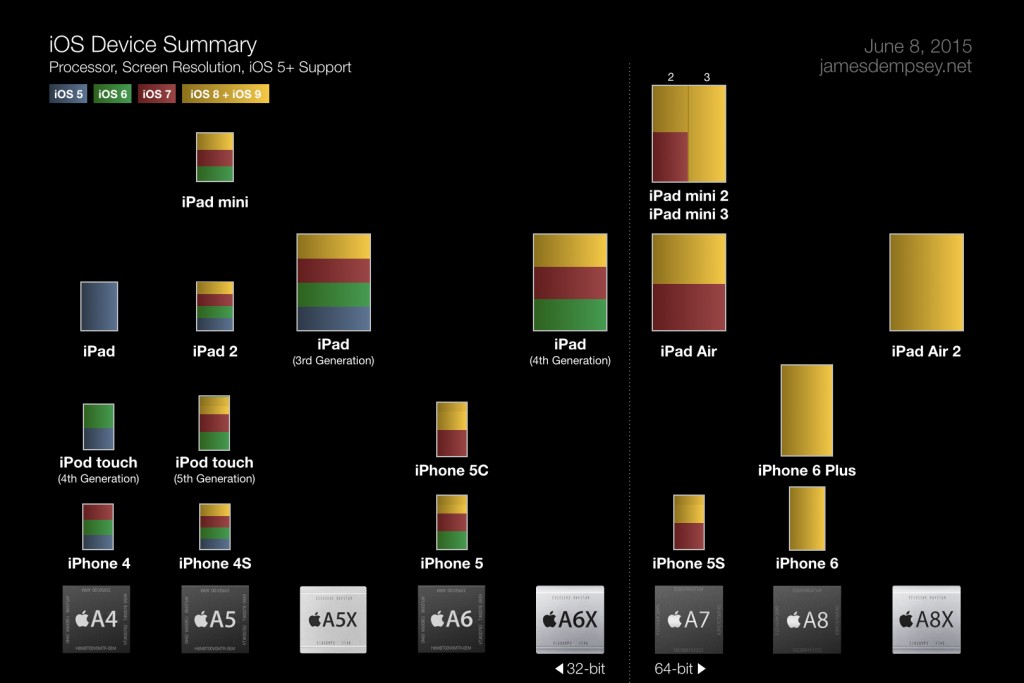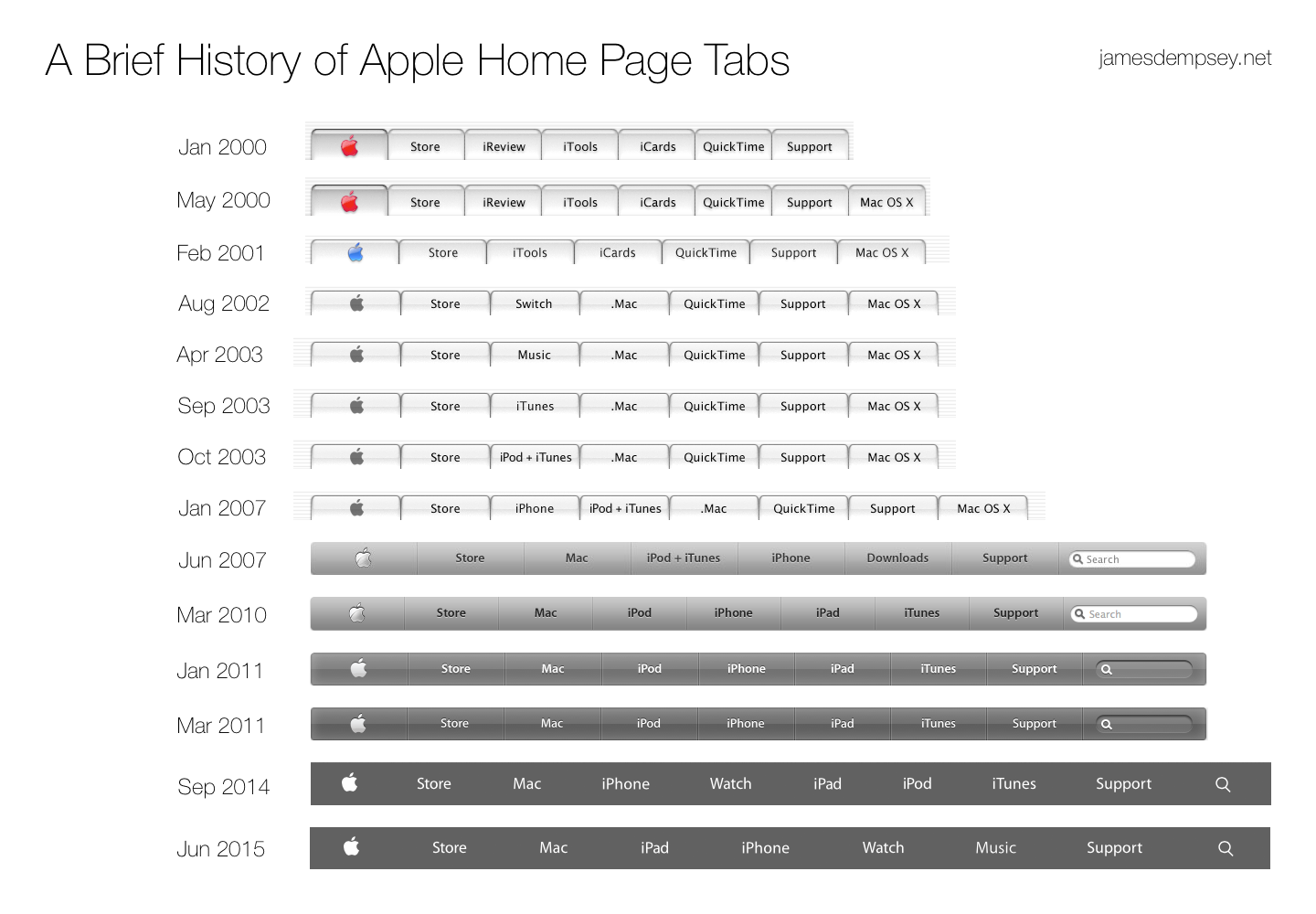September 29, 2015
The year 2015 has been a busy one in Apple Home Page Tab history.
It’s been over a decade since there have been this many changes to Apple home page tabs in a single year.

Click for full-sized image
The only other time Apple home page tabs changed three times in a calendar year was back in 2003.
All three of the home page tab changes that year revolved around the introduction of the iTunes Music Store. The Switch tab for the Mac Switcher ad campaign changed to Music with the introduction of iTMS in April 2003. This lasted five months when iTunes replaced Music. This lasted only a month when the tab became iPod + iTunes.
There were no visual style changes to the tabs in 2003, just repeated content changes to that single tab as Apple adjusted how it presented its new foray into digital music to the world.
The changes of 2003 came full circle this past June, when the iTunes and iPod tabs combined to become a Music tab with the introduction of the new Apple Music service—but even bigger changes were right around the corner.
August 2015: Store to Shopping Bag
In August 2015, a redesigned apple.com combined the shopping experience of store.apple.com with the product information found on the main Apple site.
With the online store no longer a standalone site, the venerable Store tab—a fixture in the Apple home page tab lineup since the very beginning—had outlived its usefulness.

Shopping Bag is the first tab to show state.
The new Shopping Bag tab is the logical successor to the Store tab, but it is not its replacement in either location or behavior. 1
In terms of behavior, clicking the Shopping __Bag tab displays a menu of shopping-related choices, similar to the ‘shopping cart’ on most e-commerce sites. It is the first Apple home page tab to indicate state, showing a blue dot if the user has items in their bag. 2
A New, Responsive Design
The tab bar became translucent black with underlying page content visible beneath, a refinement to the visual style introduced in September 2014. 3
The updated website design is also responsive, with the tab bar changing appearance based on page width. For a width 768 and above, the tab bar shows all of its tabs.

The responsive design hides most tabs and adds a menu tab when viewed at narrow widths.
For narrower widths, only three items are visible. The Apple tab appears in the center. The Shopping Bag tab is on the right edge. A new menu tab is on the left edge. All other tabs are presented as menu items displayed by clicking or tapping this new tab.
In the narrow layout there are other minor changes—the tab bar becomes slightly taller and the Apple and Shopping Bag icons slightly larger.
September 2015: TV no longer a hobby
In September 2015, Apple announced the fourth generation Apple TV with Siri Remote and a tvOS SDK for developers to create apps for the new device. Along with that announcement, a new TV tab was added.
This tab was a long time coming. Apple TV was first announced under its code name iTV nine years prior, in the fall of 2006. For many years, Apple referred to Apple TV as a ‘hobby’, indicating that it was not a core product such as Mac or iPhone. History indicates that hobbies do not warrant a tab on the Apple home page.
So, with the announcement of the new Apple TV and the addition of the TV tab, it seems TV is no longer a hobby for Apple. •
Since the last update, I’ve been cited as the ‘unofficial Apple home page tabs historian’ in articles at The Loop and Six Colors. Here are a few past articles on this topic that you might enjoy:
Category: Apple
July 16, 2015
I’ve updated my iOS Device Summary with the newly announced iPod touch.
You can check out the iOS Device Summary page for more info about the summary plus PDF downloads—including optimized files for printing.
For developers, the iPod touch has been a useful, relatively inexpensive compact device for testing. The previous model was released almost four years ago and sits at the very low end of devices that support iOS 8 and iOS 9. The new sixth generation iPod touch is a welcome addition as a more affordable testing device with a recent 64-bit processor. Like previous generations, the new iPod touch has a 4-inch display, so an iPhone is still needed for on-device testing of larger screen resolutions.
It is interesting to note that every iOS device that Apple currently sells, except the iPhone 5c, has a 64-bit processor.
This also means that if you need to acquire older models for testing iOS 8 and iOS 9, you will need to turn to refurbished or used devices.
I hope you find this version of the chart helpful. •

Categories: Apple, Software Development, iOS
June 29, 2015
I’ve updated my iOS Device Summary with the iOS 9 info Apple has publicly posted.
Check out the iOS Device Summary page for the rationale behind the summary plus PDF downloads—including optimized files for printing.
Some things to note from WWDC announcements and Apple product lineup changes:
All devices that support iOS 8 will also support iOS 9.
Apps are currently required to support both 32-bit and 64-bit processors. With iOS 9, the App Store will also accept apps that are 64-bit only. This allows developers to limit deployment of an app to more recent devices with faster CPUs and GPUs. The device summary now has a line showing where 32-bit ends and 64-bit begins.
Finally, devices for testing:
-
At $199, the 16 GB, 5th generation iPod touch is still the most affordable compact iOS 9 device
-
At $299, the 16 GB, WiFi iPad mini 2 is now the most affordable iOS 9 iPad
-
As of 6/19/15, the original iPad mini is discontinued—try used and refurbished devices for low-end iPad testing.
I hope you find this version of the chart helpful. •

Categories: Apple, Software Development, iOS
June 19, 2015
Last fall, I posted A Brief History of Apple Home Page Tabs which showed a visual history of each change in the tabs on the apple.com home page since they were introduced in January 2000. That post also called out some of the major changes and common themes in both interface style and products over the years.
On June 8th, 2015, about 9 months after the previous change, the Apple home page tabs have changed again.

Click for the full-sized image.
With the introduction of the Apple Music service, the iPod and iTunes tabs have been replaced with a single Music tab.
The Apple home page has had iTunes and iPod in a tab for almost twelve years. The iTunes tab first appeared in September 2003 with iPod being added for a combined iPod + iTunes tab the very next month in October 2003.
They shared a tab together for close to a decade before being broken out into separate tabs in March 2010, where they have remained until being combined into a single Music tab last week.
A Music tab on the Apple home page is not entirely new, nor is the term Apple Music. A Music tab first appeared at the introduction of the iTunes Music Store on April 28, 2003.* In addition, posters commemorating the launch listed the site address AppleMusic.com.
That tab lasted until September 2003, when it changed to an iTunes tab. Time will tell if the Music tab and the Apple Music brand hang in there longer this time around. •

Poster of the original AppleMusic.com from 2003.
I used the Internet Wayback Machine to help track these changes down. If I’ve missed any changes, please feel free to let me know!
*The original post listed the addition of the original Music tab in May 2003, which is the earliest archive I found in the Internet Wayback Machine. However, this change almost certainly went live on the day the iTunes Music Store was introduced on April 28th, 2003.
Category: Apple
June 3, 2015
I’ll be doing a few things next week at WWDC and wanted to pass along my schedule. Hope to see you at one or more of these happenings!
Monday: NeXTEVNT Fundraiser for the Cartoon Art Museum

I’ll be doing a short set of James Dempsey and the Breakpoints songs at this fundraising event at the Cartoon Art Museum.
This event has been a lot of fun each year, always with great speakers and plenty of time to meet and mingle with very interesting folks. If you are a fan of comics, cartoons, or animation — or have an interest in where the technology we use every day comes from — this is a great event for a great cause.
I highly encourage you to check out the details and come to the event.
NeXTEVNT Fundraiser for the Cartoon Art Museum
Monday, June 8th, 4:00 PM – 9:00 PM
Wednesday: LIVE near WWDC 2015 (aka The Big Show!)

Our LIVE near WWDC show is the biggest James Dempsey and the Breakpoints performance of the year — and this year’s show is our biggest ever. Thanks to our fabulous sponsors, we’re at a bigger venue and the drinks are on us!
The event is free, but registration is required. We are handling admission the way AltConf does. Registration does not guarantee admission. For general admission registrations, we will fill the venue on a first come, first admitted basis.
You can read all of the details and register for the event here.
James Dempsey and the Breakpoints, LIVE near WWDC presented by Capital One
Wednesday, June 10th, Doors open at 7:30 PM, show starts at 8:00 PM. Event goes until 10:30 PM
Friday: Closing session at AltConf 2015

I’ll be closing out the week at AltConf 2015 again this year with an easy-going look back at the announcements of WWDC 2015 and their possible implications in a session entitled So, That Just Happened.
This session is a talk about the week in review and not a set of James Dempsey and the Breakpoints songs.
However, there may also be a bit involving a ukulele.
AltConf 2015, June 8 – June 12, 2015
Closing Session, Friday, June 12th, 3:15 PM, Theater 15
A Busy WWDC 2015 Week
It will be a busy WWDC week as we walk around with our heads swimming trying to soak in all of the new announcements.
I hope you can make it out to one or more of these events! And if you do, please say hello! •
Categories: Mac, Music, Software Development, iOS









